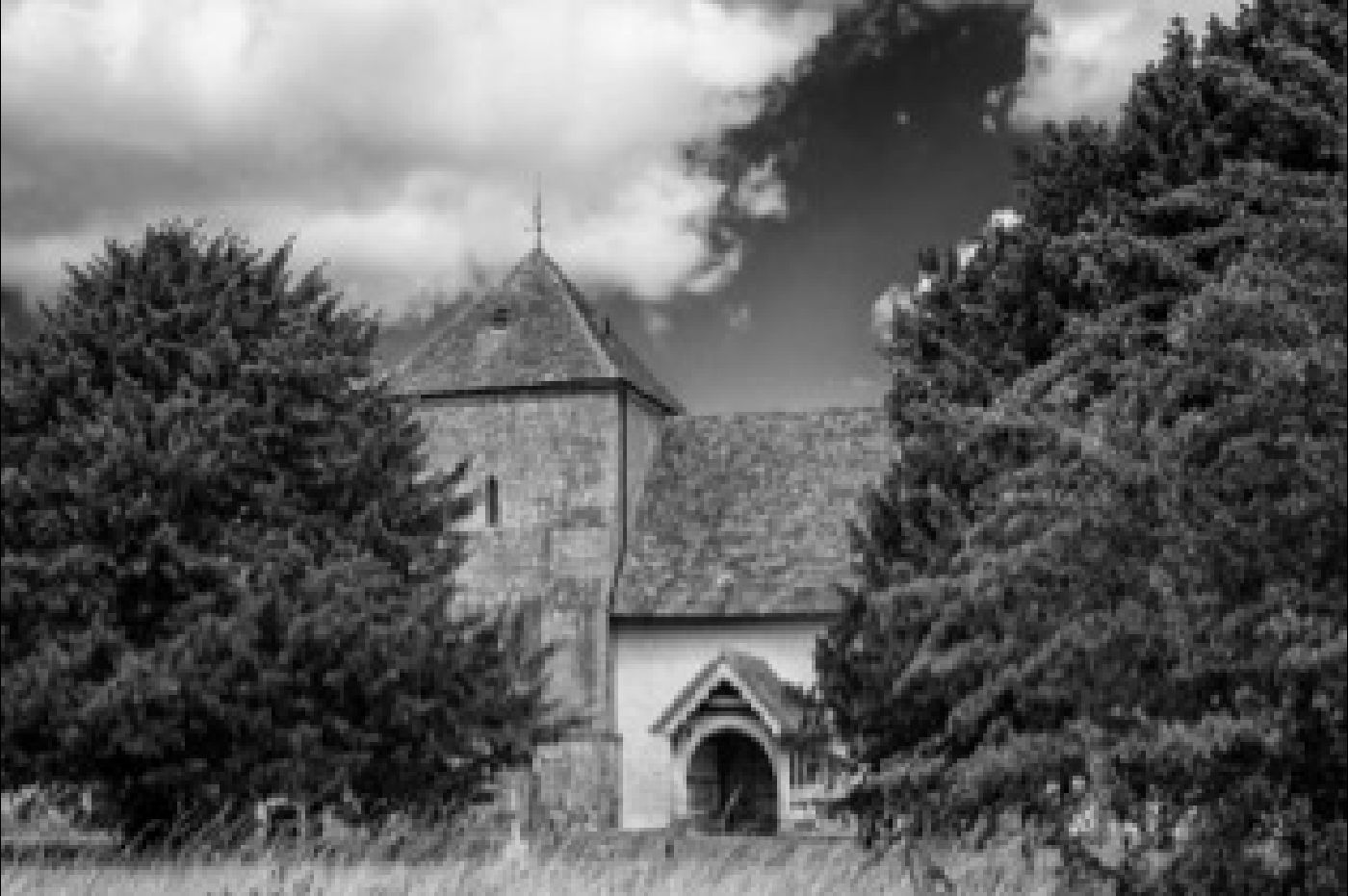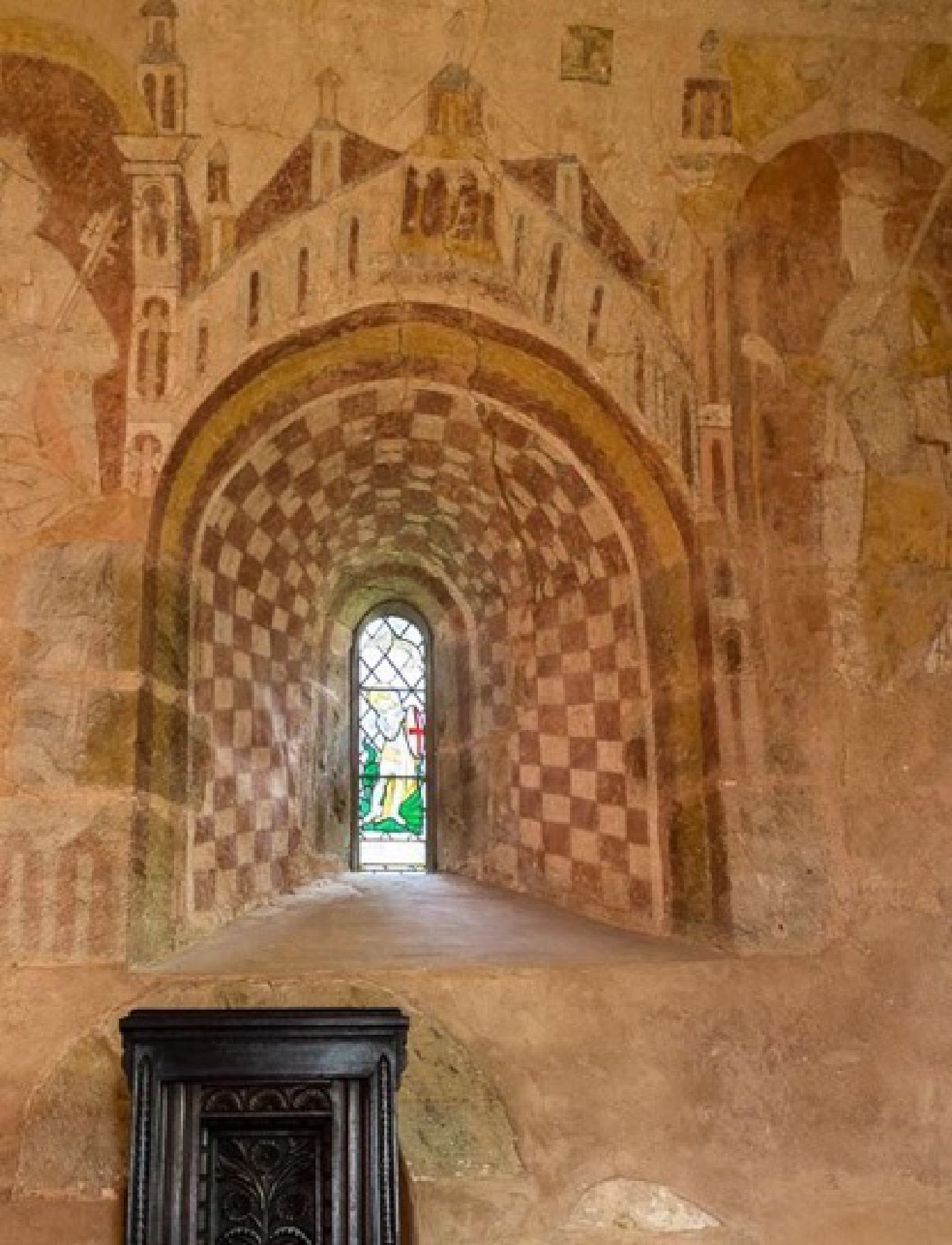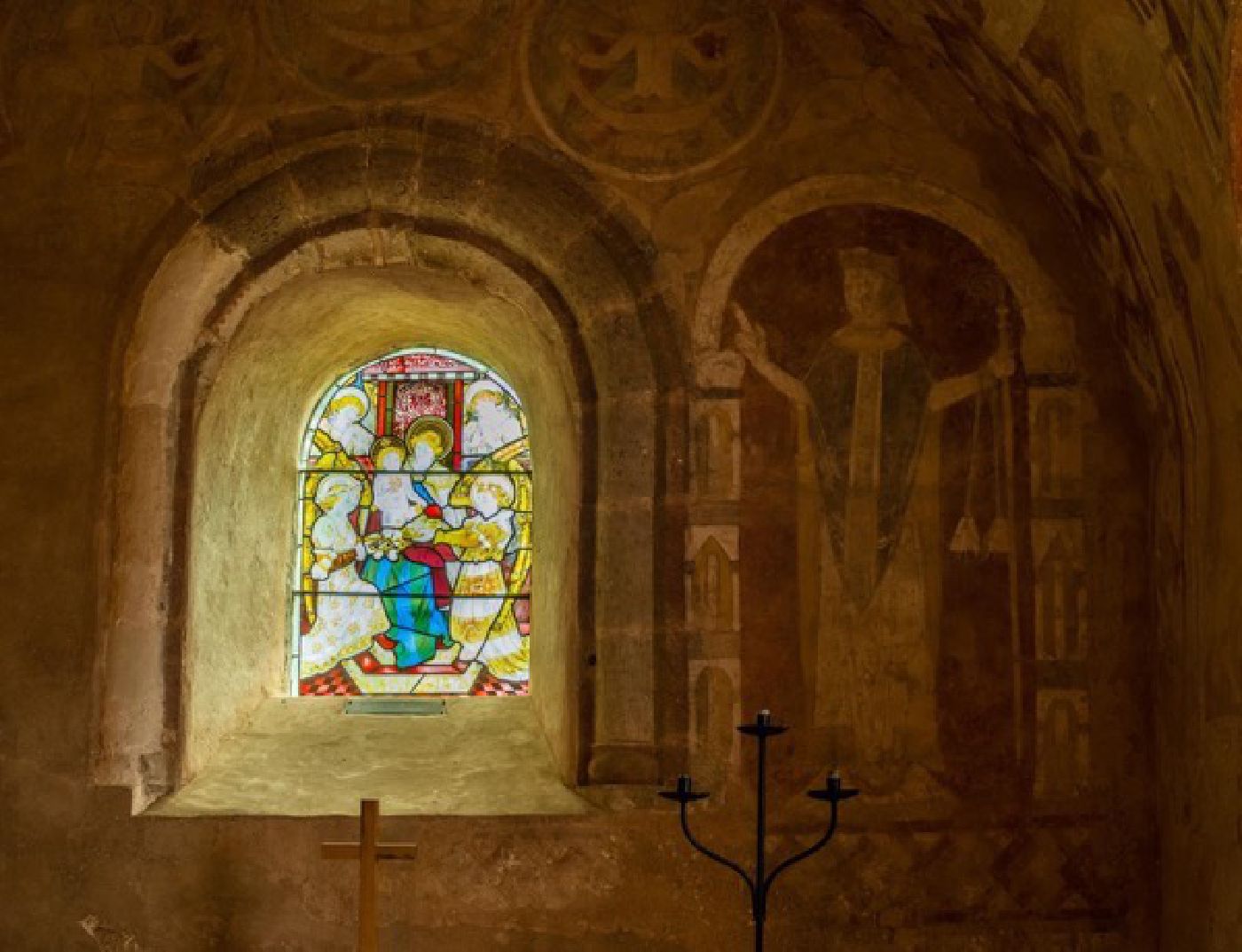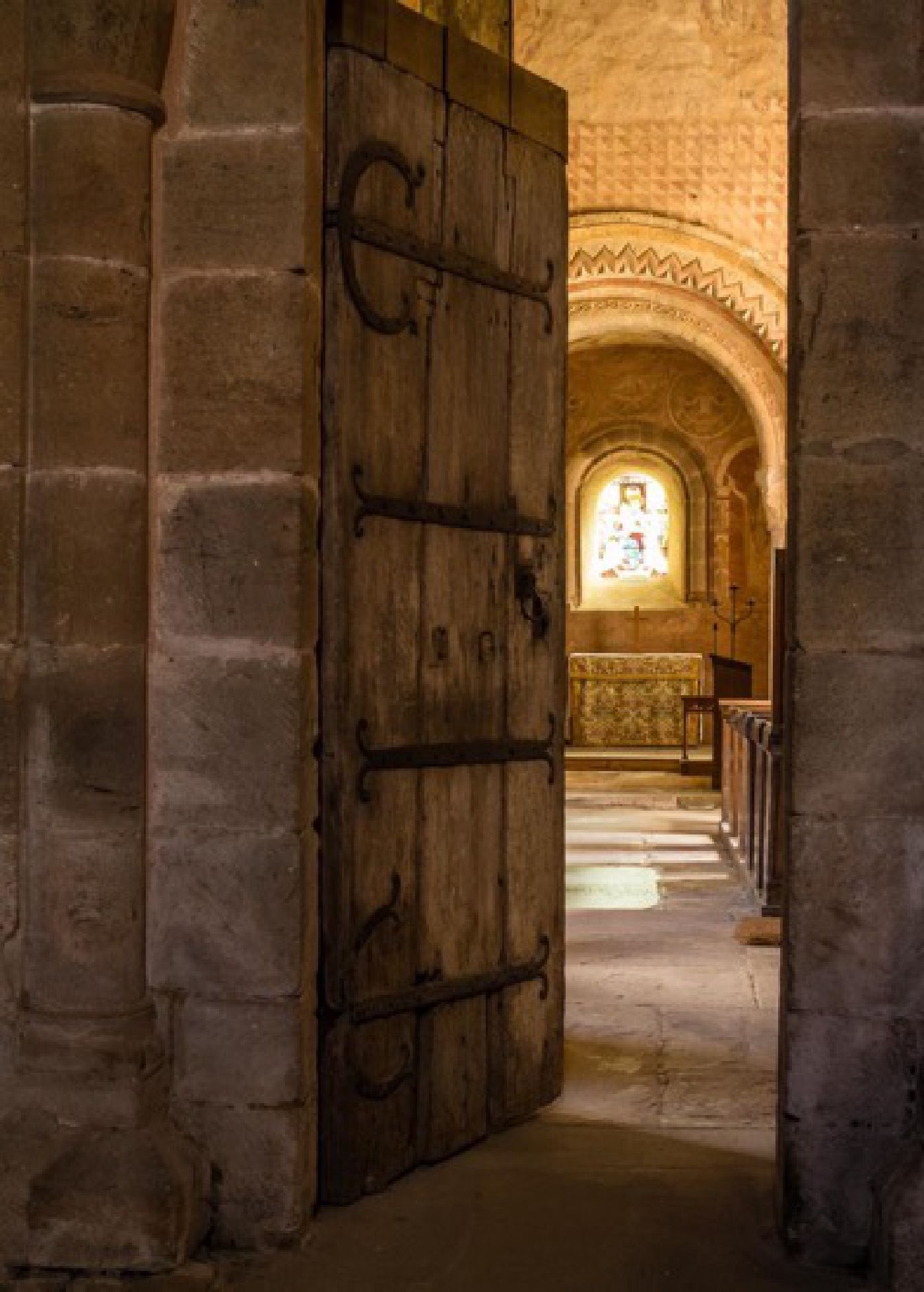The nave is still the same simple aisle-less shape, but has undergone more changes than the chancel, with later window additions. This means most of the wall painting in the nave is a little later, with the exception of the chancel wall. However, it is thought that originally the Romanesque wall paintings did continue further in the space where the congregation would stand. It is when one enters the chancel, which would be the preserve of the priest, and where laity might only glimpse its glories on very special occasions, except through a screen, that the full magnificence of the twelfth century paintings can be seen. The low barrel vault and the walls are all decorated, and their colours, even though probably the base paintings and lacking much of the fine detail, are clear and quite bright. Christ sits in judgment, with the twelve apostles on the walls at either side. There is a depiction of the New Jerusalem above a window, and images of bishops and pilgrims that may well represent the consecration of the church and its benefactor. Unlike later Judgment paintings, the fate of the sinful, being tossed into the Eternal Flames, is absent. When these paintings were fresh, how bright they must have been, and how they must have drawn the eye, and focused the mind also. Even when window embrasures were small, the plastered walls would reflect the candlelight upon the images. The red and yellow ochres are much in evidence but, in addition, Kempley has the earliest use in England of blue azurite in the pigments. This was a very expensive pigment, which shows that a wealthy patron paid for the artwork. The manor belonged to the de Lacys, an important baronial family who originated in Lassy, Normandy, and this shows their wealth and power, as well as religious devotion, (endowing churches and monastic institutions was considered very beneficial for the soul).
So I commend this tiny mediaeval gem to any who can go and see it, not only for its history, and indeed its charm, but because within its walls I feel Bradecote and Catchpoll are even more ‘real’, and you can see life was not as drab as you might think.



